She saved over 2,500 Jewish children from the Holocaust. As Marek Michalak, the former Children's Ombudsman, wrote beautifully, she saved not only their lives, but also their identity, childhood and humanity. Until the end, she remained modest and authentic, fought for good, cared for the weaker. Her story is touching and gives hope that even in the darkest times you can remain Human.
“I learned the need to help the needy in my family home. That is why I am not a heroine ... ”- these words best reflect the character of Irena Sendler, who risked her own life for children. Who was one of the greatest Polish heroines?
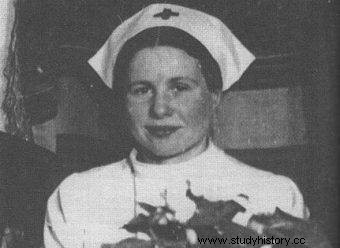
Irena Sendlerowa saved over 2,500 children
Irena Sendlerowa was born on February 15, 1910 in Warsaw. Her father was a doctor, he worked in Otwock, where Irena spent her childhood. She learned Yiddish from her peers. After the death of her father, the family moved to Piotrków Trybunalski, where Irena attended Helena Trzcińska's secondary school.
Interwar period
She enrolled at the University of Warsaw. She studied law for 2 years, and then Polish philology, but she did not graduate from any of these faculties. She was planning to defend her MA thesis probably in the fall of 1939, which proved impossible due to the outbreak of World War II. During her studies, she joined the Association of Polish Democratic Youth and fought to lower tuition fees for people from working class and peasant homes. She practiced teaching at the branch of the Janusz Korczak orphanage.
It was one of the few to express open opposition to growing anti-Semitism. Anna Bikont in the book "Sendlerowa w hiding" writes:
When her Jewish friend was beaten, Irena attacked the militant with her fists, shouting "You bandit!".
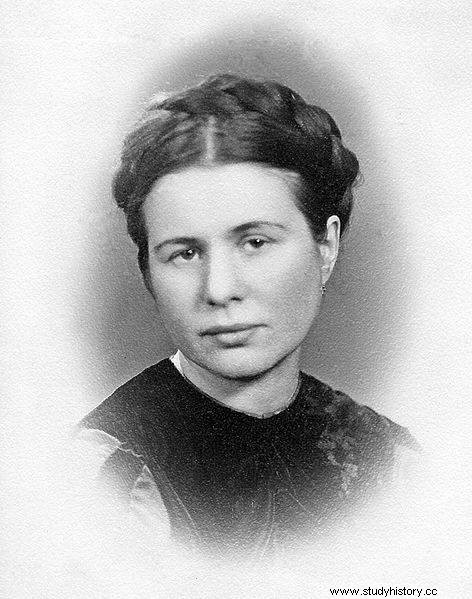
Irena Sendlerowa is the most famous "Righteous Among the Nations"
She also opposed the creation of a "bench ghetto". Tomasz Urzykowski describes:
She demonstratively sat in places intended for Jewish students (the so-called bench ghetto), and in her index she crossed out the entry designating her place in the room "on the Aryan side".
She was suspended from student rights for her attitude.
In the 1930s, Sendler was a social worker at the Free Polish University. She worked in the legal department of the Mother and Child Aid Section as a social worker, sex educator and psychotherapist. Anna Bikont reports:
Irena traverses the districts of Warsaw more often than sits at a desk. He conducts environmental interviews and intervenes. However, unlike her friends with whom she will be saving Jewish children in a few years, she does not take care of the children. Her charges are mainly "servants, an element of low intellectual level, dying of poverty and defenselessness". He visits them in basements and unheated mansards, where one room is separated by eight or ten people.
Many of these women gave birth to illegitimate children who were then treated very badly. The aim of Irena Sendler's work was not only legal assistance, but also wanted to:“Raise mothers to a higher moral level. Awaken them with maternal love, persuade them to refrain from hitting their children, and to change their "sexual lifestyle" (...) ".
In 1935, the Aid Section was closed and Irena found a new job at the Department of Social Welfare and Public Health of the Warsaw City Council. She looked after the unemployed living in barracks, residents of the Annopol estate. After some time, she was promoted and transferred to the Department Headquarters, where she was responsible for training employees.
World War II
After the outbreak of the war, Irena Sendler continued her social work. In her free time, she helped wounded soldiers suffering from tuberculosis in the Ujazdowski Hospital, and obtained illegal help for them from a secret PPS cell. After some time, she changed her job to work in a community center closer to home. She was responsible for granting benefits to the poorest families, she also helped young people avoid deportations to the depths of the Reich, arranging employment for them in a disabled cooperative. She also secretly helped her Jewish friends, granting them benefits and organizing meals. In her statement to the Yad Vashem Institute, she said:
The basic help in social care was the community interview. So we falsified interviews - that is, we used fake names and that was how we got money, food, clothes.
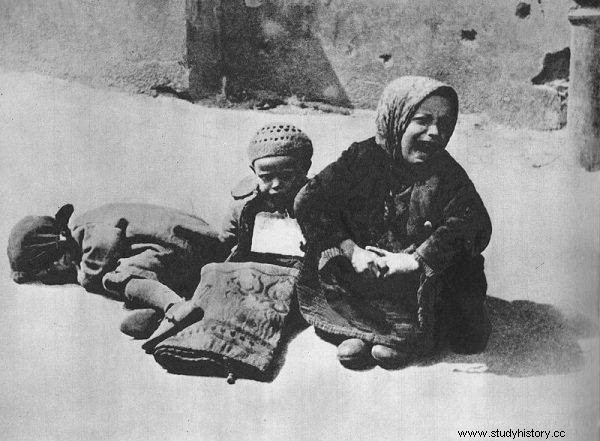
Homeless children in the ghetto
During the war, she also helped the inhabitants of the Jewish ghetto. She used a pass that she obtained from the director of the Municipal Sanitary Establishments. She visited her friends, provided medicines and food, was involved in organizing activities for children, took part in the underground life . Anna Bikont writes:
However, Sendler did not go beyond the wall only for a short time, to bring something and leave. She looked - to use the term Rachela Auerbach - at "death walking in broad daylight in the streets of a closed city", and that was part of her everyday life. In the ghetto, she accompanied her friends in desperate attempts to lead a normal life - organizing activities for children, lectures, concerts, holidays, conspiracies.
Its activity became more intense after the Germans announced the decision to liquidate the ghetto on July 22, 1942. However, it probably had to arrange the funds allocated for this purpose earlier. Adolf Berman related:
(...) the hunt for street children has begun. Despite resistance and breaking away, hundreds of children were loaded on carts and transported to the Umschlagplatz. (...) it was a time of permanent hunting for children. In the streets there were parents who were constantly screaming in despair and kidnapped.
The decisions to donate the children were very difficult. On the one hand, it was an opportunity to be rescued from an inhuman place, on the other - families were separated, sometimes forever. Irena Sendlerowa recalled:
Grandfather, father, mother snatched this child from their hands, did not want to give it to me, finally I left, they ran after me, I came back and the same thing, they were not able to part with the child. Eventually, the grandfather snatched the baby from his mother's hands and gave it to me. The next day they took everyone to the Umschlagplatz, the girl survived, she is a doctor in Warsaw.
Irena Sendlerowa began to cooperate with the Council to Aid Jews "Żegota", and after a few months she managed the newly created children's section. Under the pseudonym "Jolanta", together with her co-workers, she rescued children from the Warsaw ghetto, forged documentation by entering Polish names in it, and shifted the children to the "Aryan side". The women helped as much as they could. Later this group was called "Sendler's net" or "Sendler's liaison".
Importantly, the real data of the children were written on tissue paper, and the files were kept at Sendler's house. In this way, she saved their identity, it also made it possible to control whether anyone is harmed and where they are. The documents were not lost even when Sendler was arrested - they were hidden and kept by Janina Grabowska. According to some stories, the papers with the names of the children were kept by Irena in a jar buried in Jadwiga Piotrowska's garden. After the war, thanks to Adolf Berman, all documentation was to be sent to Israel.
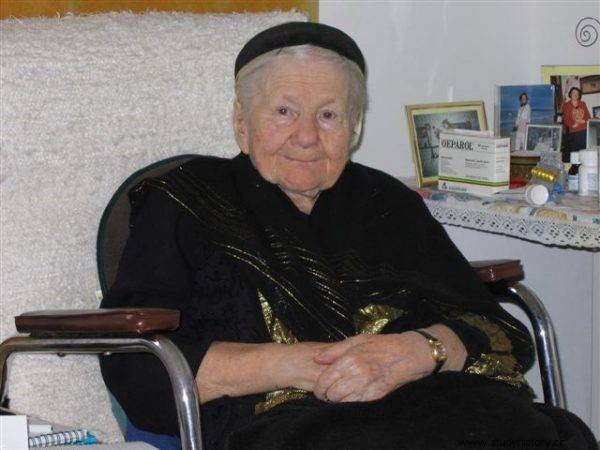
Irena Sendlerowa was socially involved until the end of her life
In October 1943, Irena Sendler was arrested by the Gestapo (probably as a result of her neighbor's denunciation) and imprisoned:
Eleven of them came. The Gestapo tears the boards off the floor, tears the tiles out of the stove with crazy shouts, pushes, and fantasies.
She was interrogated and tortured. In the book "Sendlerowa w hiding" we read about the interrogation in Szucha:
They tortured me to give you the name of the organization, management, address, then we will take you home by limousine. They showed me that list of denunciations against me, I know that these denunciations came from Oener circles.
Irena was taken to Pawiak:
The atmosphere was wonderful, not to break in, to maintain a dignified attitude and mutual help. The female prisoners consoled themselves "the Germans are making their pants out of fear".
Irena, however, was under the protection of the underground and thus avoided death. Maria Palester organized a fundraiser to buy it out. When Sendler was to be transported from Pawiak to Szucha, a Gestapo officer took her over, claiming that he was to take her for additional interrogation, and then released her. Irena became Klara Dąbrowska and continued her cooperation with Żegota.
As a nurse, she also took part in the Warsaw Uprising.
Among the difficult experiences, however, she remembered the deaths of children with Janusz Korczak and Stefania Wilczyńska the most:
Of all my most dramatic war experiences, such as torture in Pawiak, in the Gestapo on Aleja Szucha, the dying youth in the insurgent hospital where I was a nurse did not make such an impression on me as the sight of Korczak's march with children walking calmly to meet death.
She still helped after the war
After the end of the war, she continued her voluntary work in the Polish Red Cross and the Social Welfare Department of the Capital City of Warsaw. Of Warsaw. It was she who established the Mother and Child Care Center, she also founded orphanages. She was extremely involved in education, she was active in the Women's League, and in the National Capital City Council she chaired the committees for widows and orphans and health. During the Stalinist era she was brutally interrogated by the Security Service. During March '68 she was considering going to Israel.
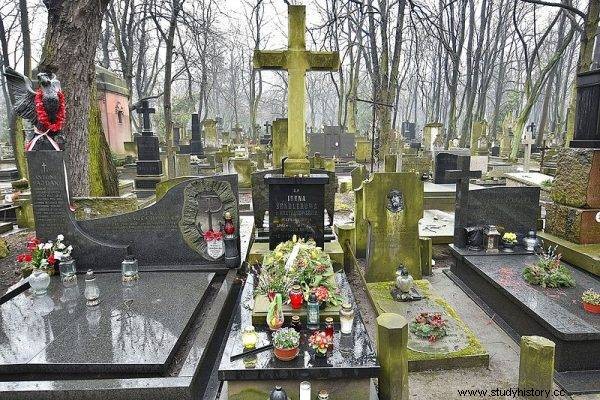
The grave of Irena Sendler at the Powązki Cemetery in Warsaw
For her heroic activity, in 1965 she was awarded the title of Righteous Among the Nations, but she received the medal only in 1983. Then she planted her tree in the Avenue of the Righteous:
A tree on a mountain in Jerusalem is even more than a monument. The monument could be destroyed and the Tree of Remembrance will always grow.
Until the end of her life, she remained a modest, warm and committed person. She had great hope in young people:
You are the future of the world! Do something to make it better. No wars, no innocent deaths. Spread good. Be sensitive to the fate of those weaker than you.
Since 2006, the Irena Sendler "For fixing the world". Its first laureates - Robert Szucht and Norman Conrad - were personally chosen by our great, silent heroine.
Irena Sendler's message should remain with us also in modern times:
Today, both in the country and in the world, there are many painful problems, many tragedies that must be resisted. And also to see those who rush to the rescue of the injured.
Bibliography:
- Anna Bikont, Sendler's hiding, Wydawnictwo Czarne 2017
- Irena Sendler's biography, Sprawieldiwi.org.pl
- Tomasz Urzykowski, Irena Sendlerowa saved 2.5 thousand. children, Wybcza.pl [accessed on February 14, 2021]
- Marek Michalak, Anyone who drowns should shake hands ”, Warsaw 2018
